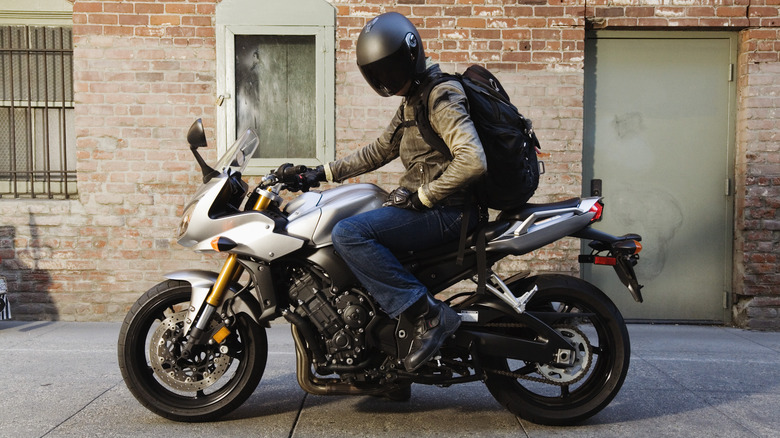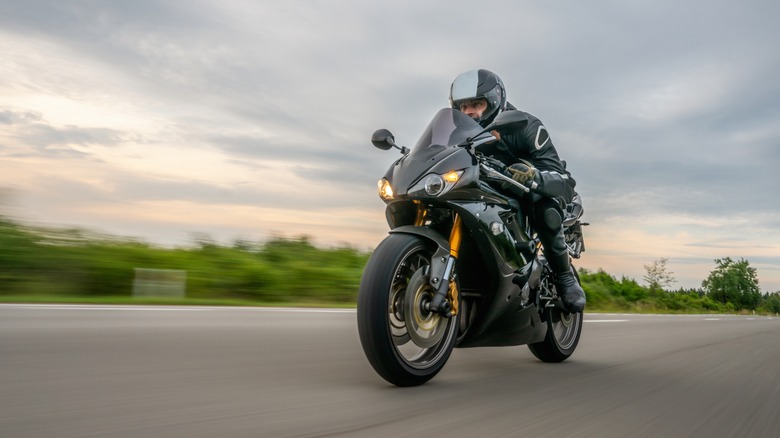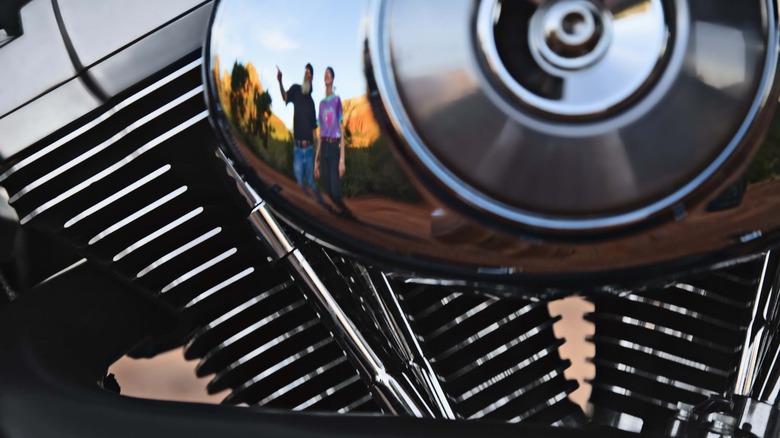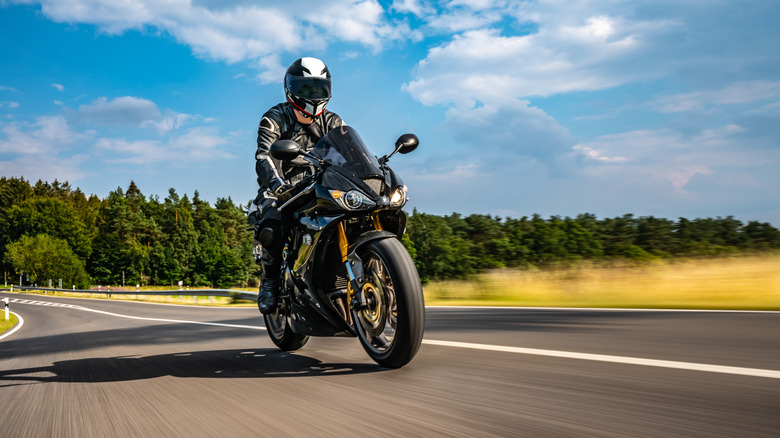3 Ways To Maximize Fuel Efficiency For Your Motorcycle
Motorcyclists are constantly looking for ways to improve their rides. From accessories to technical improvements in the complex machinery itself, bikers can't get enough of the tinkering that's inherent to motorcycle ownership. One important feature that many owners spend an exorbitant amount of time thinking about and working to improve is the fuel efficiency of their chopper.
The average motorcycle has a fuel efficiency rating of roughly 44 MPG, according to the US Department of Energy. This almost doubles the total range per gallon of a typical car. With a smaller gas tank, filling up is cheap and cheerful, with a tank lasting an astonishing length of time for most riders. Even still, it's worth considering ways to improve upon these already great metrics. In cars and motorcycles alike, there are some things that a driver can do to yield the best possible gas mileage rating. For one thing, the weight of the vehicle can play a direct role in the energy efficiency of the automobile. Therefore, many car owners will try to keep their vehicles as light as possible rather than lugging around extra gear that isn't always needed.
Similarly, motorcyclists often busy themselves with weight comparisons when choosing a new bike to purchase. You're also likely to get better fuel efficiency with a higher grade of fuel, but this comes at a cost increase that must be factored in. Aside from these basic approaches, motorcycle owners have a plethora of unique ways to improve their fuel efficiency that won't come standard for car drivers.
Use aerodynamic positioning and accessories
A motorcyclist has a unique opportunity while out on the road. Cars utilize an external frame that's rigid and immobile. As a result, car manufacturers have to take aerodynamics into consideration while designing the body of any new car. Motorcycles, on the other hand, include the physical form of the rider themselves in the external shape of the vehicle as it cuts through the air.
Keeping your body positioned low on the bike's seat will help force your shape into a more aerodynamic outline. This will reduce wind resistance and improve the efficiency of your motorcycle's engine. The more drag you create while riding, the harder your propulsion system has to work to maintain its speed. This might translate into a natural braking force, or a natural instinct to lean harder into the throttle, forcing your engine to increase its output.
Bikers have access to a vast marketplace of motorcycle accessories. Some are excellent additions to the chopper and will enhance the enjoyment you get out of a ride. Others, like specialized helmets, jackets, and pants, are designed to promote fast air movement around your body and decrease the standard drag that your head and limbs bring into the equation. Utilizing body positioning and accessories that minimize your profile will improve the mileage efficiency your motorcycle enjoys.
Keep your engine clean
The engine is the lifeblood of any vehicle. Without a properly functioning engine, you can't expect your motorcycle to bring you very far. Keeping the engine clean will enhance the look of your bike and improve its reliability. Because the engine isn't housed behind a metal hood, it's easily exposed to water, dirt, and other debris that may be kicked up off the road while you're out riding. Therefore, cleaning your motorcycle engine is a part of the standard maintenance process in the same way that washing the windows and mirrors forms a part of typical car ownership routines.
Keeping the engine clean doesn't just improve the feeling of your drive, it's also an important part of the puzzle when working to improve fuel efficiency. The debris that can collect on your motorcycle may eventually make its way into the nooks and crannies of the exposed engine. Once embedded into the moving parts of the bike's propulsion system, small deposits have a nasty habit of degrading the functionality of the vehicle.
The process is quite simple, in practice. Using compressed air, blast the exterior surface to lift off loose dirt and debris. Be sure to remove any parts that are designed to sit overtop of other components and can be easily damaged like the air filter. Use a degreaser and then scrub down the engine. You might also consider using a seal protectant product on hoses, brushings, and other connective parts.
Prioritize calm and competent driving practices
Calm handling while out on the road plays a significant role in the fuel efficiency (or lack thereof) that your bike enjoys. This is true for cars and motorcycles alike. Quick braking and hard accelerating puts increased mechanical strain on the engine and requires more gasoline (or electric battery power) to complete the maneuvers that a driver engages in on a regular basis. It's for this reason that motor vehicles achieve far better fuel efficiency statistics on highways than in cities, as well. Driving on the highway typically sees motorists cruising at higher average speeds. But without the need to constantly start and stop at lights, roundabouts, and for other hazards that may present themselves, the vehicles are able to perform at peak efficiency. It's the same mechanical workrate concept that forces a pedal bike rider to exert more effort while in a low gear than while traversing a path in a higher one.
Driving on highways any time you are able will improve your fuel efficiency, but so too will calm driving practices. Easing on the gas and breaks whenever you use them and maintaining consistent speeds whenever possible will make your driving smoother and take some of the natural strain off of your motorcycle's engine.



